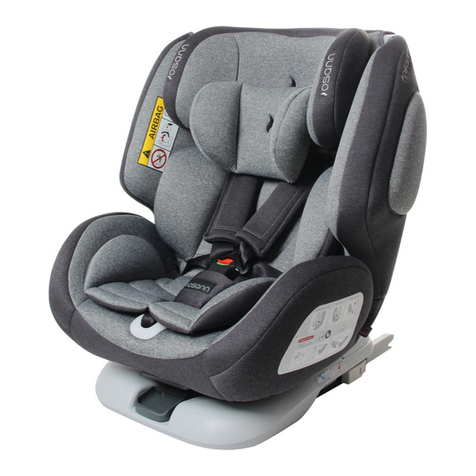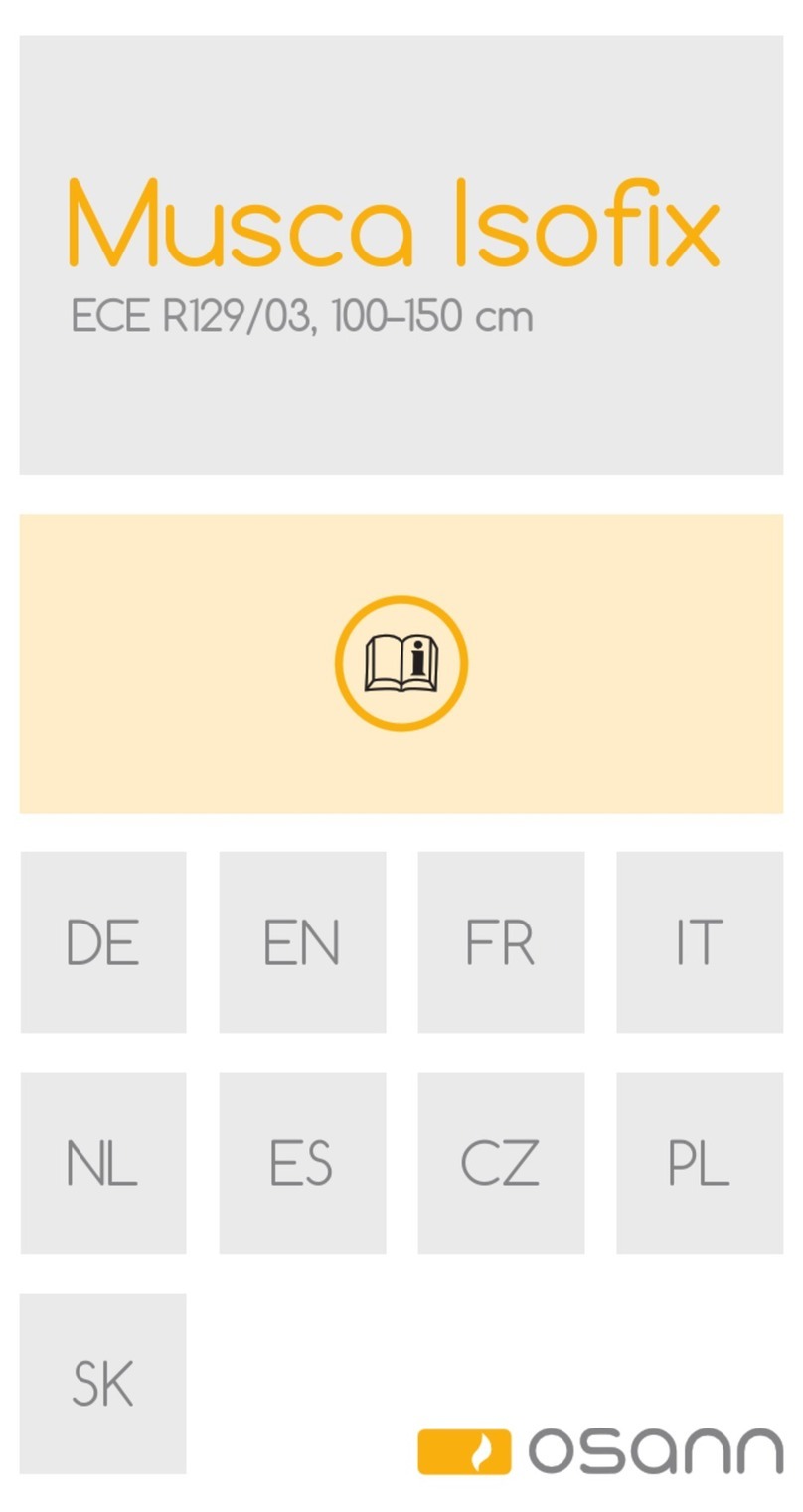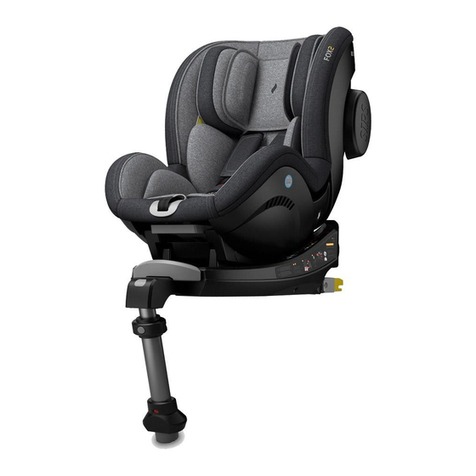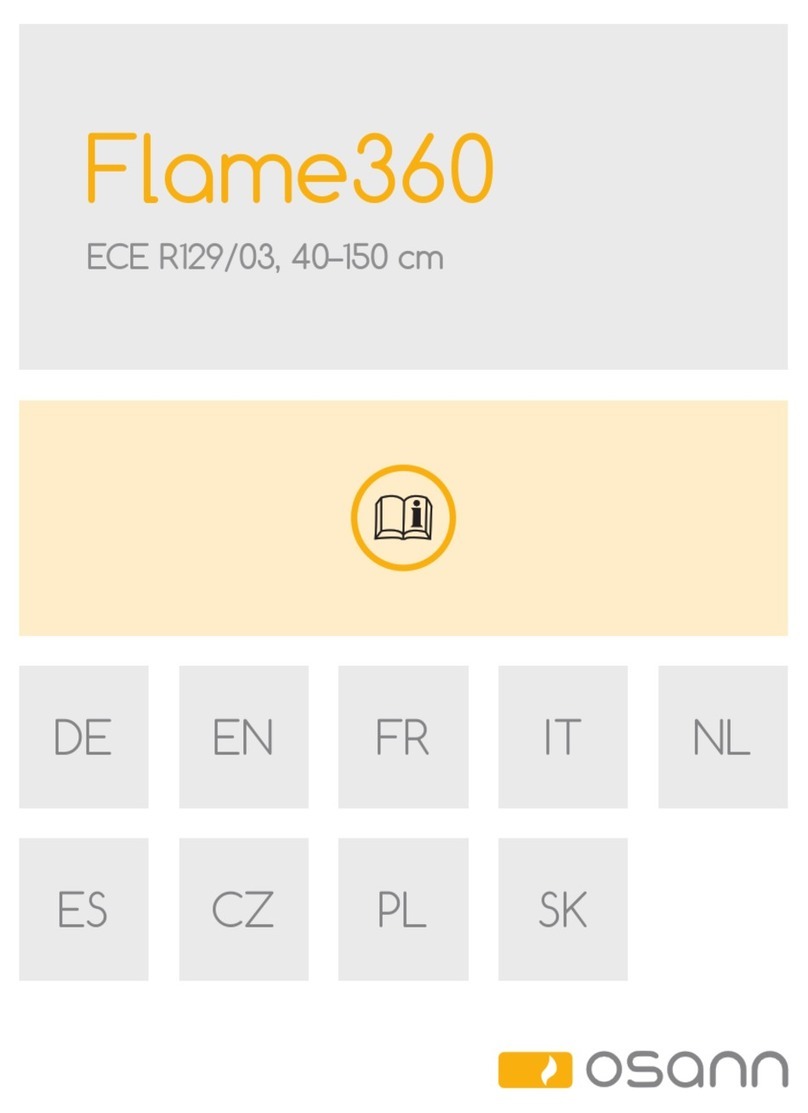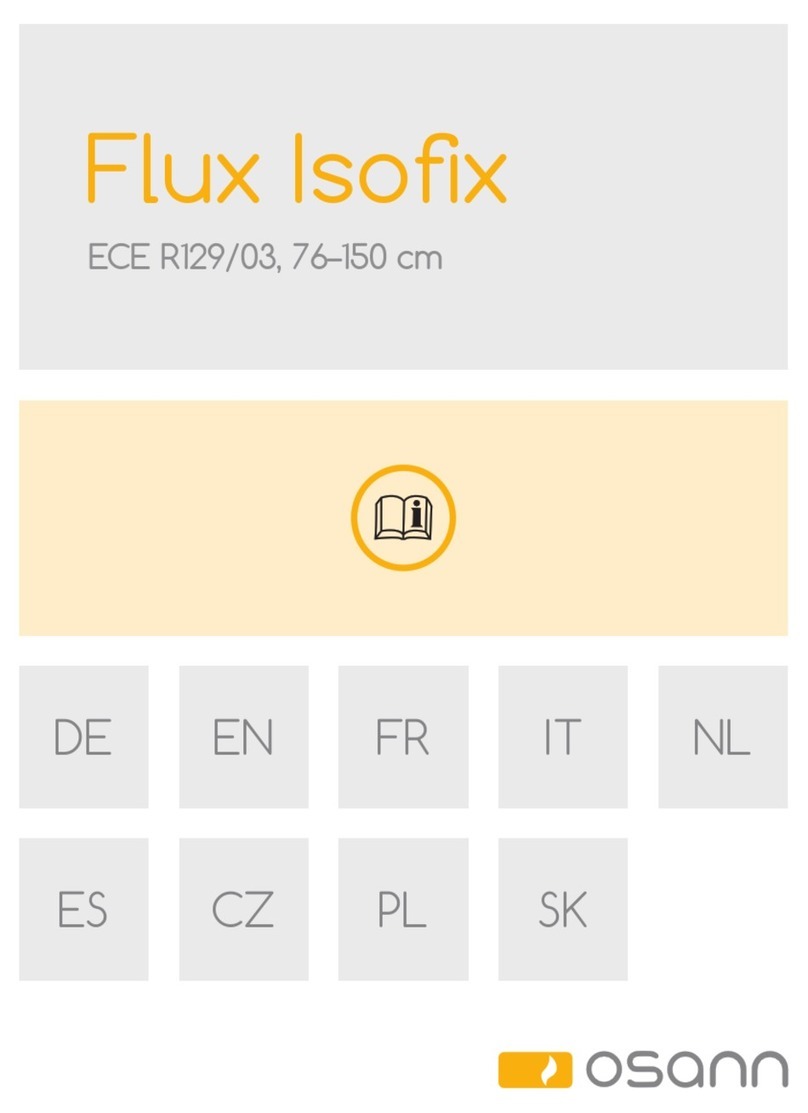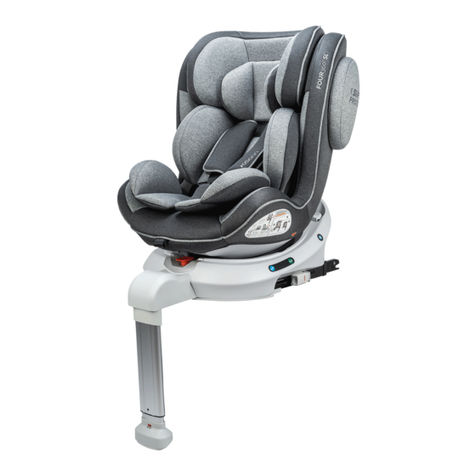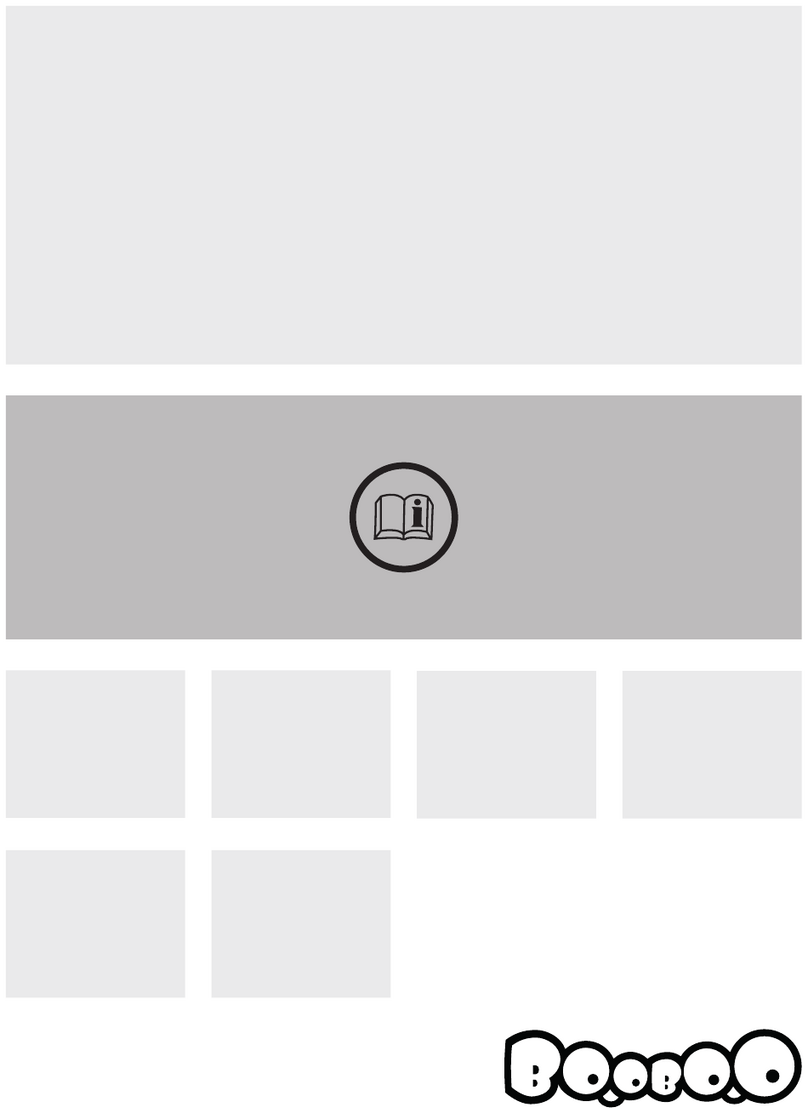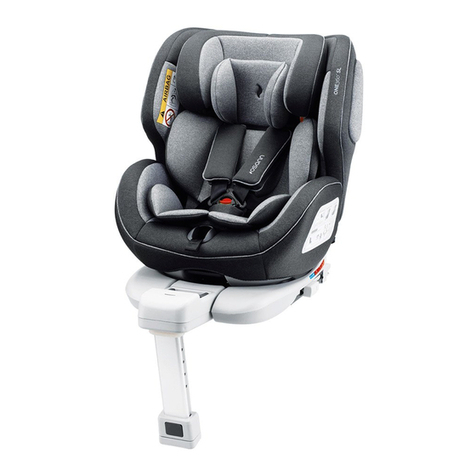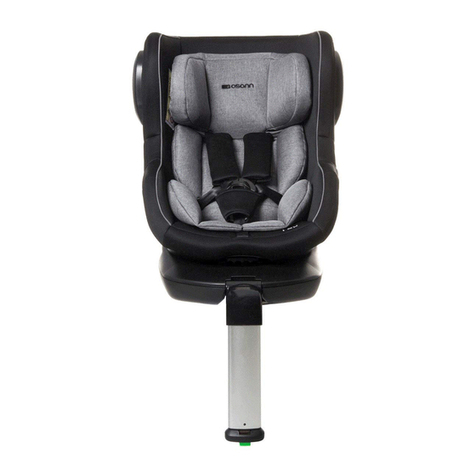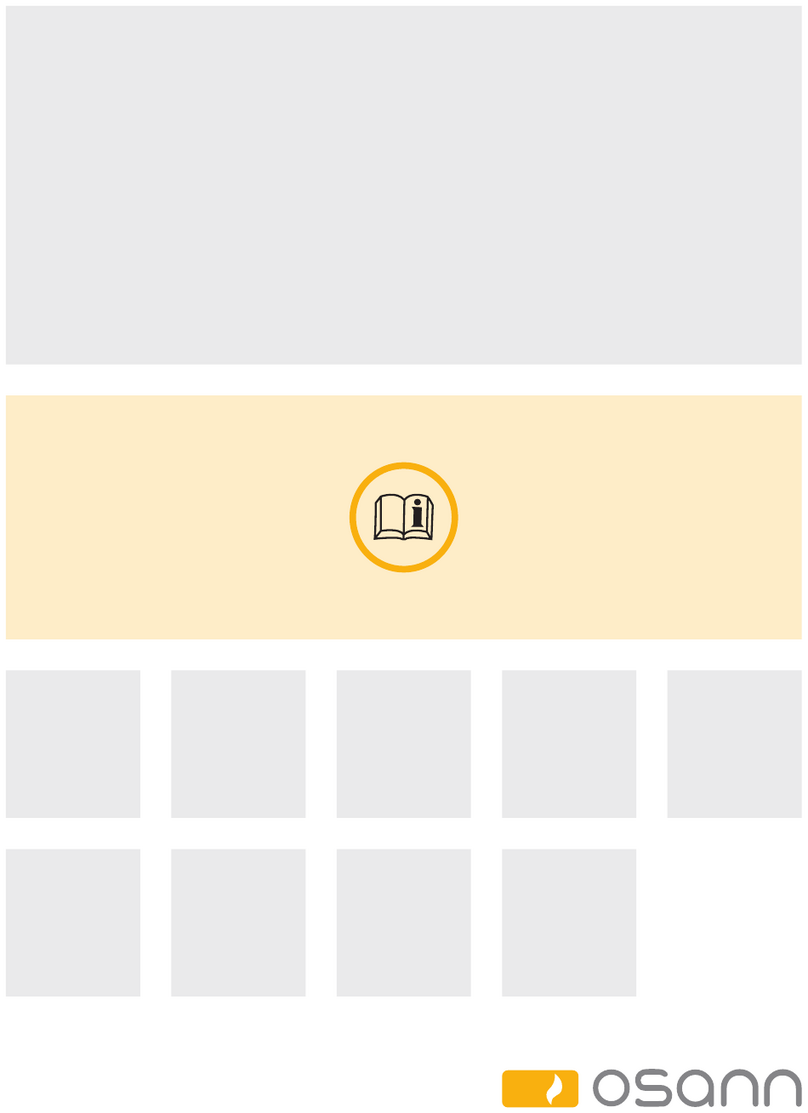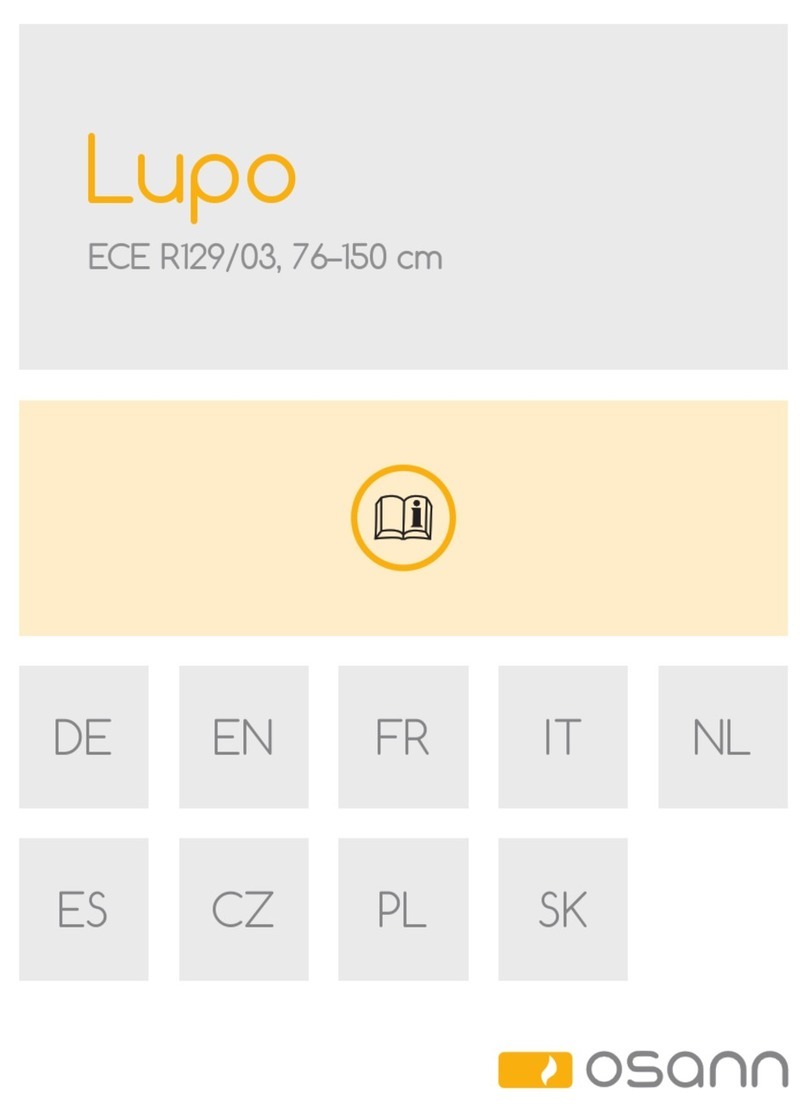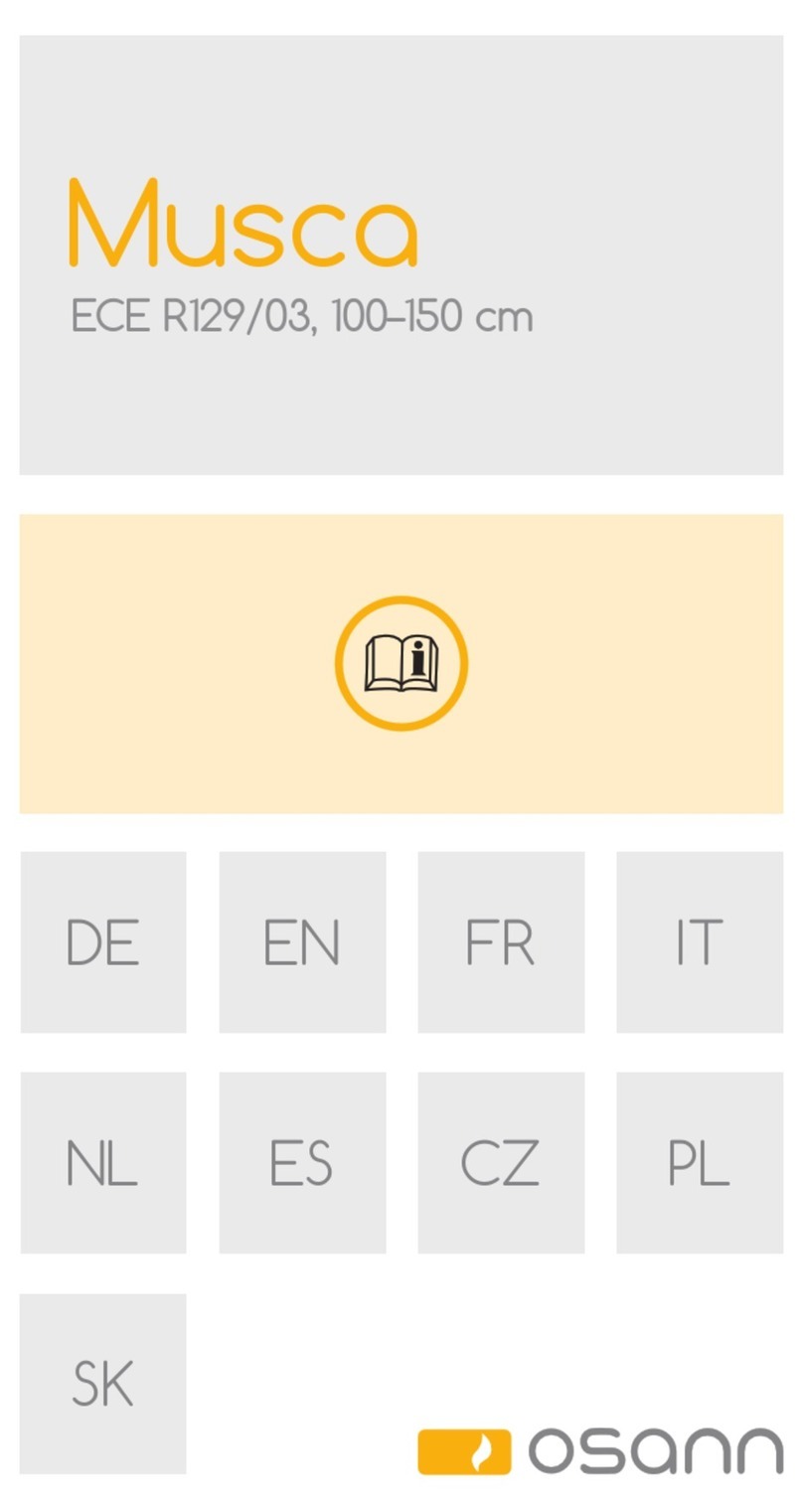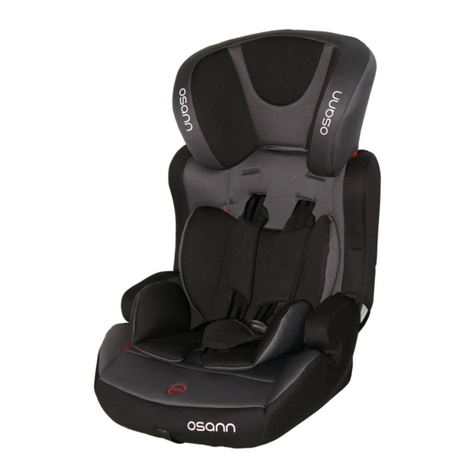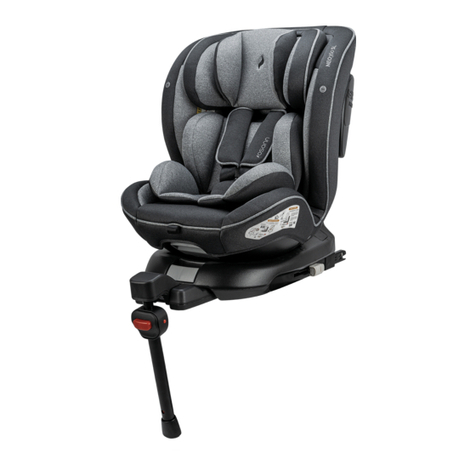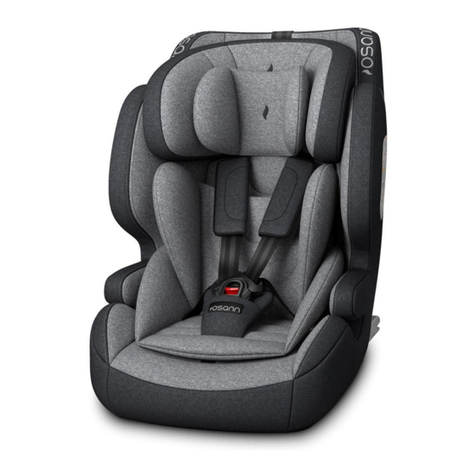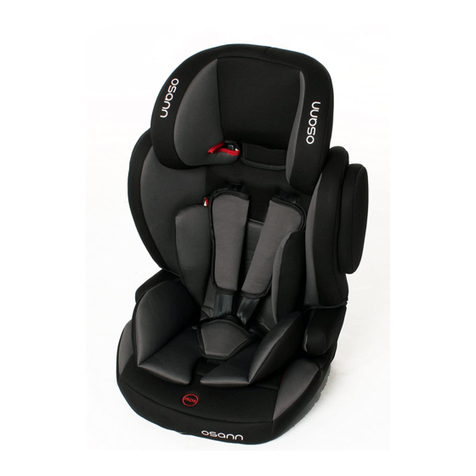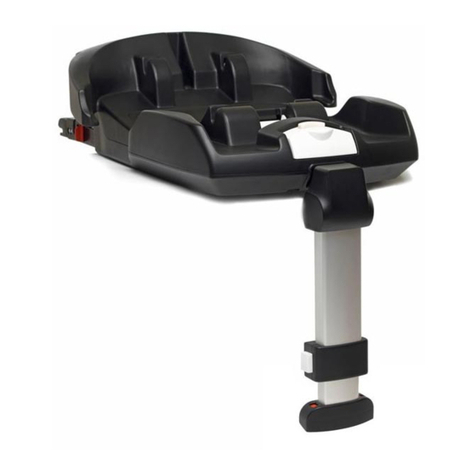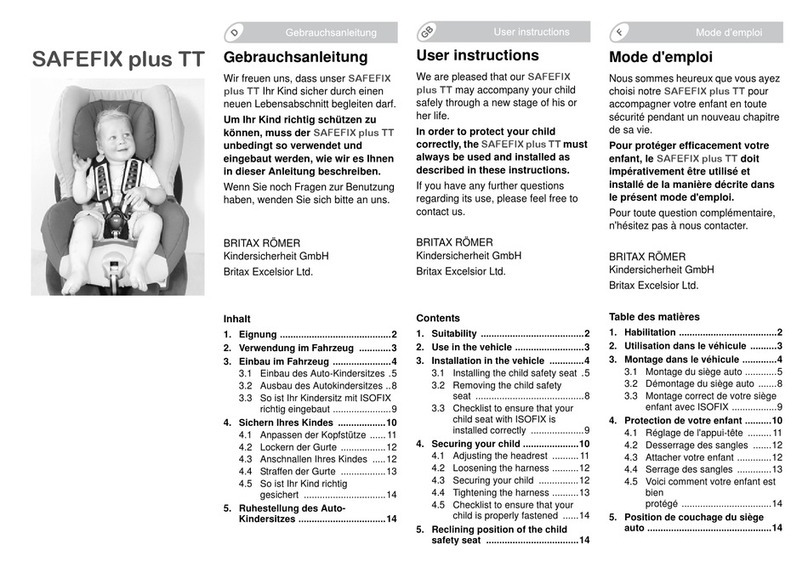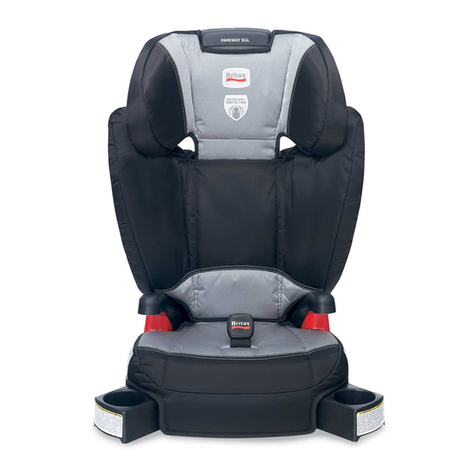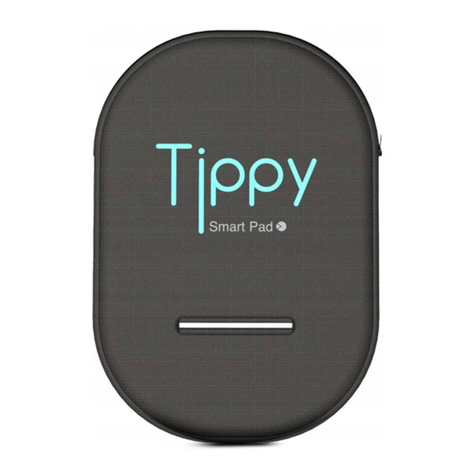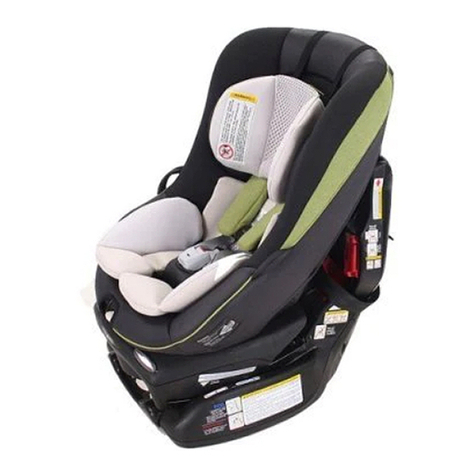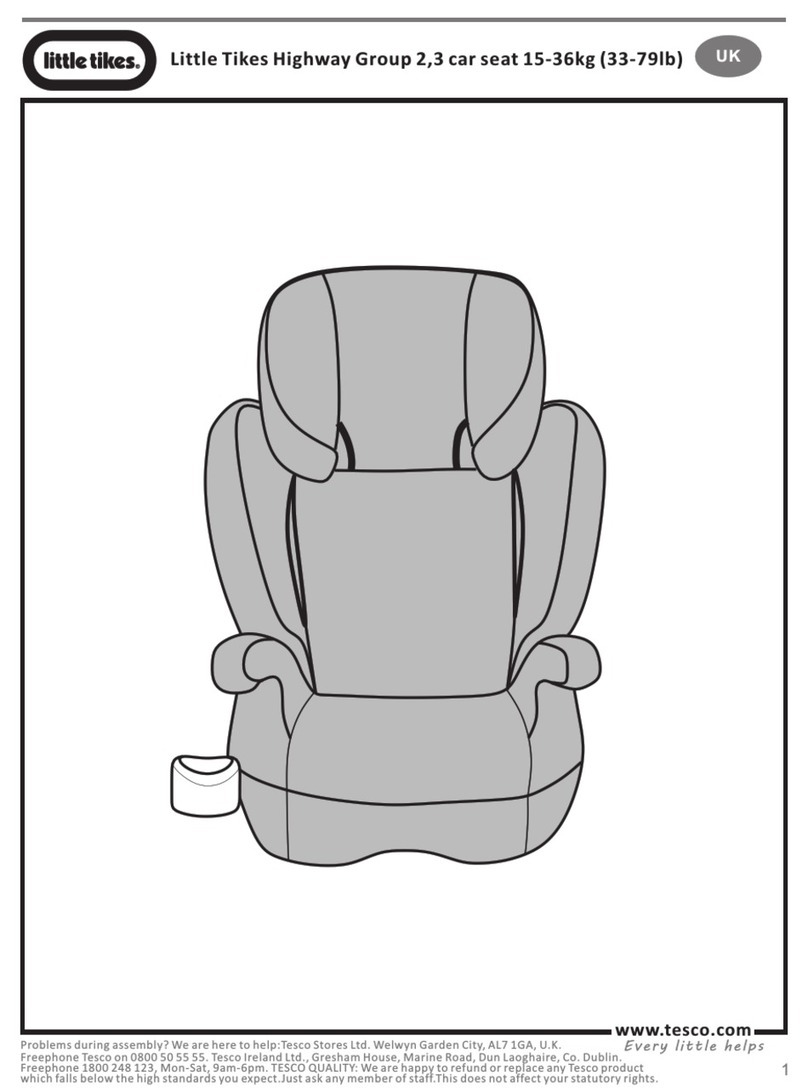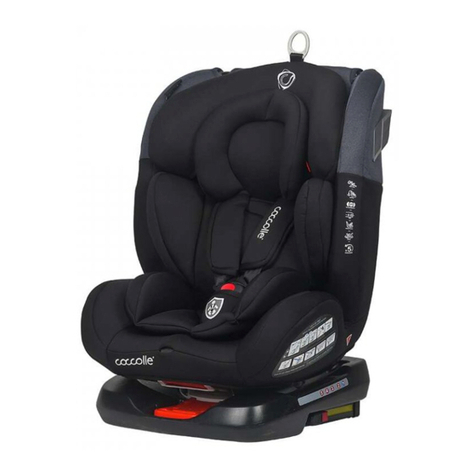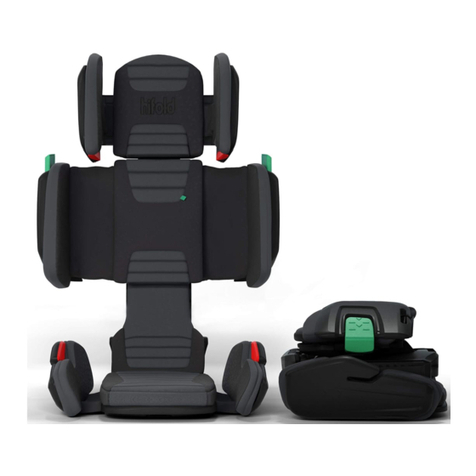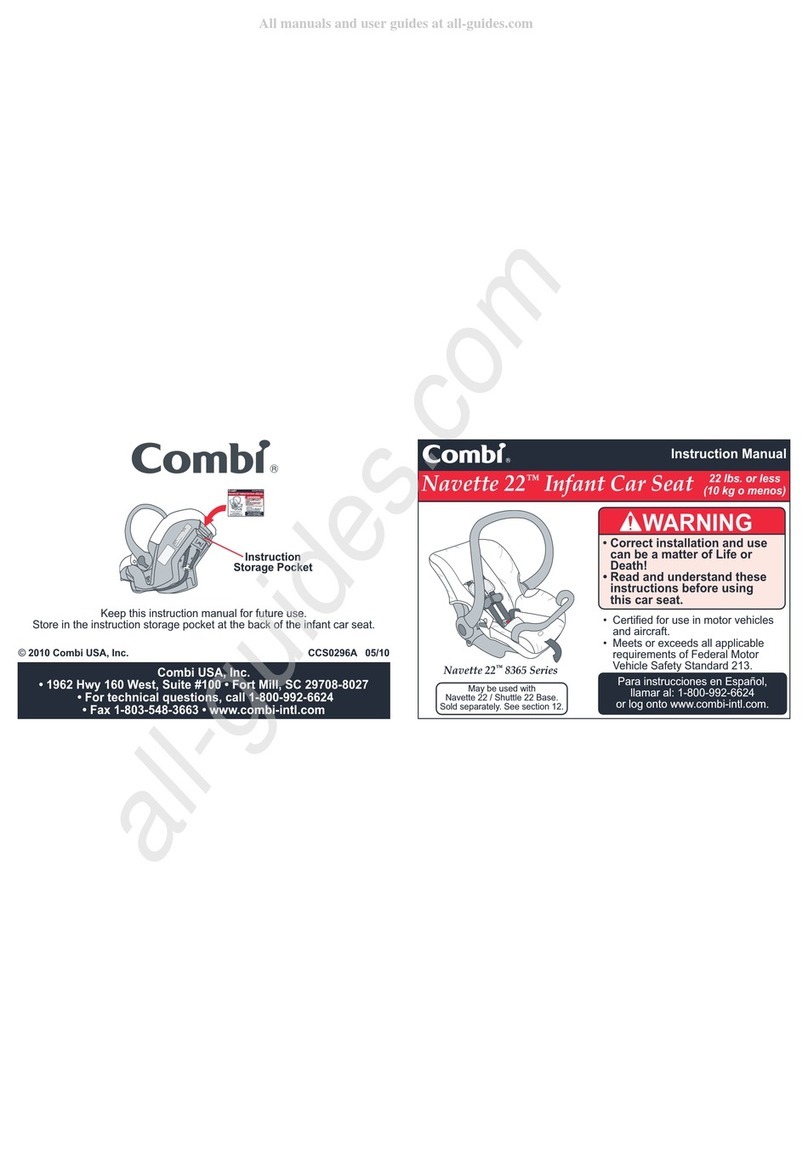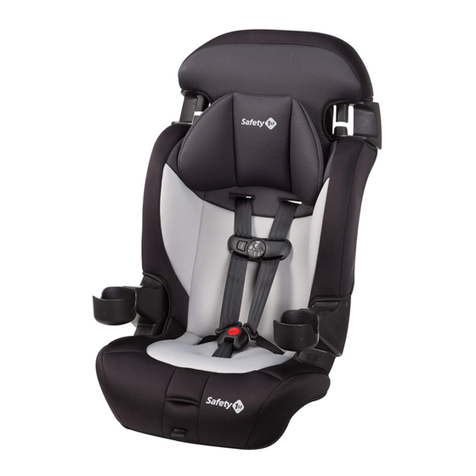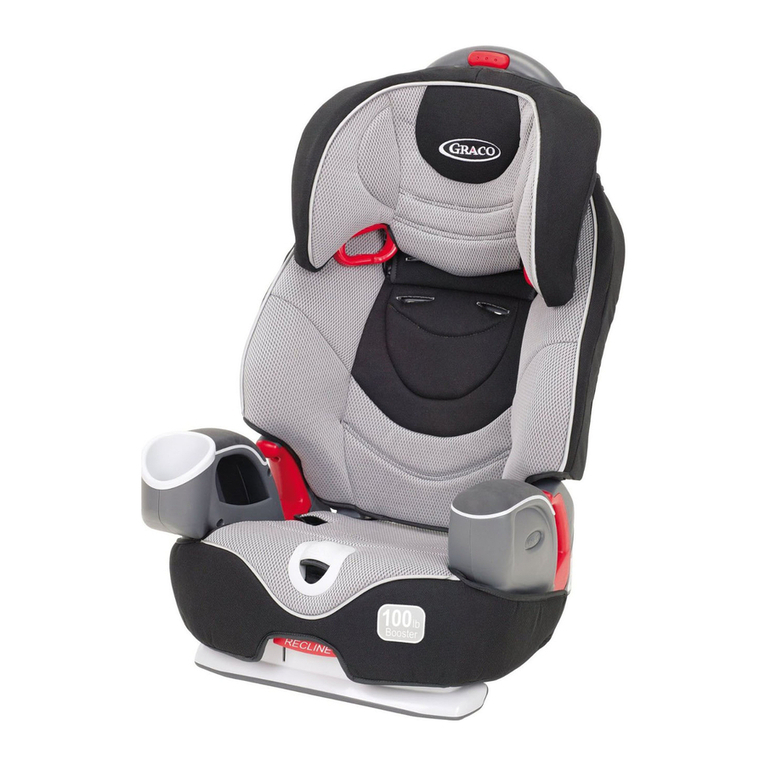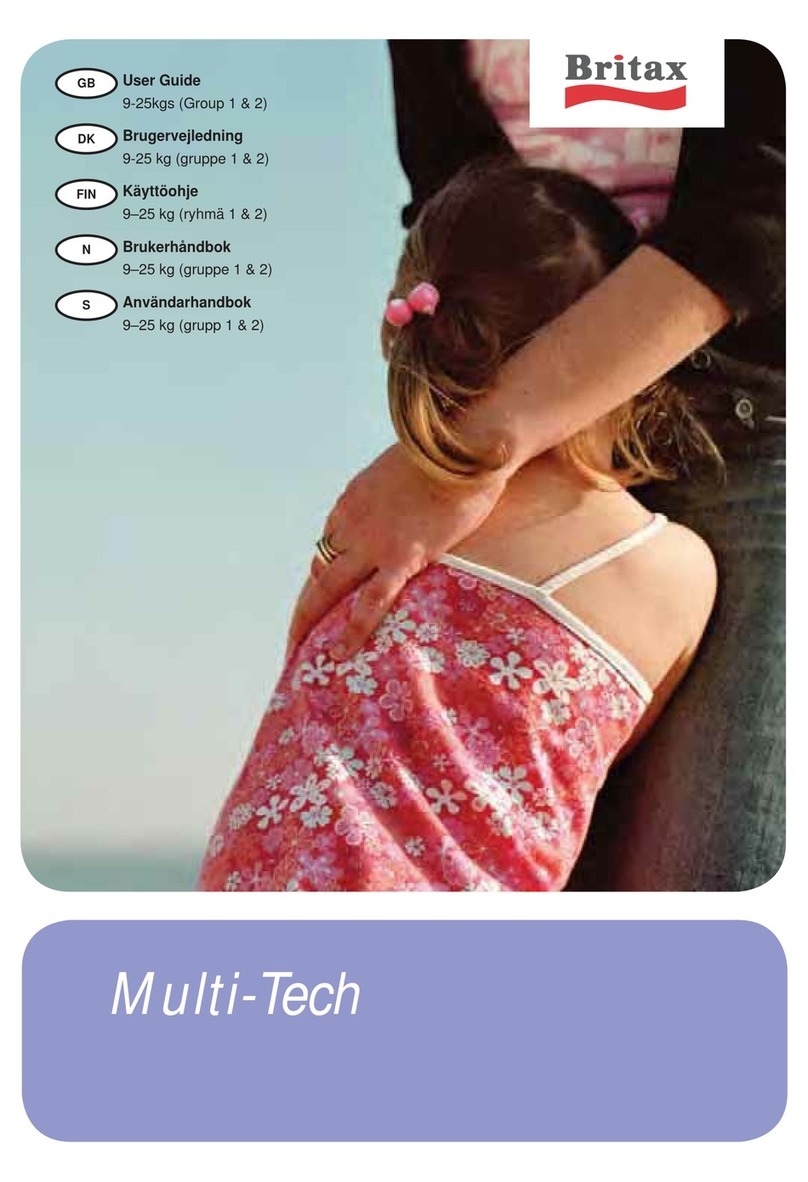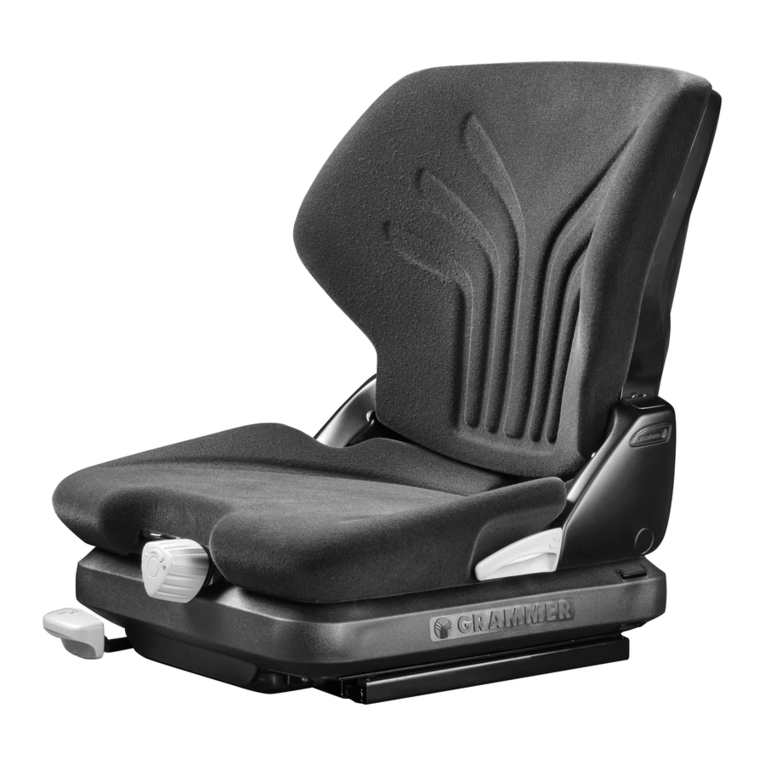
- 3 - DE
WARNUNG
• Bitte lesen Sie die Anleitung vor der Verwendung sorgfältig durch und bewahren Sie diese zum
späteren Nachschlagen auf, um die Sicherheit Ihres Kindes zu gewährleisten. Die Nichtbeachtung
der Anweisungen in diesem Handbuch kann zu schweren Verletzungen Ihres Kindes führen.
• Der Kinderautositz darf nur mit dem zugehörigen Fünf-Punkt-Gurtsystem für Kinder unter
einem Körpergewicht von 19 kg (40-105 cm Körpergröße) verwendet werden.
• Der Kinderautositz kann nicht mit einem Fünf-Punkt-Gurtsystem für Kinder, die 19 kg oder
mehr wiegen (über 105 cm Körpergröße), verwendet werden.
• Der Kinderautositz kann mit dem Isox-Befestigungssystem vorwärts- und rückwärts gerichtet
eingebaut werden.
Wichtig: VERWENDEN SIE DEN KINDERAUTOSITZ NICHT IN FAHRTRICHTUNG, BEVOR DAS
ALTER DES KINDES 15 MONATE NICHT ÜBERSCHRITTEN HAT (SIEHE BEDIENUNGSANLEITUNG).
• Für den Isox-Einbau: Lesen Sie unbedingt das Handbuch des Autoherstellers.
•
Verwenden Sie keine anderen tragenden Berührungspunkte als diejenigen, die in der Anleitung
beschrieben und in dem Kinderrückhaltesystem gekennzeichnet sind.
• Verwenden Sie diesen Kinderautositz nicht zu Hause. Er wurde nicht für den Gebrauch zu
Hause konzipiert und sollte nur in Ihrem Auto verwendet werden.
• Lassen Sie Ihr Kind niemals unbeaufsichtigt in dem Sitz.
• Stellen Sie den rückwärts gerichteten Kinderautositz nicht auf Vordersitze mit Airbag. Dies
kann zu schweren Verletzungen und sogar zum Tod führen.
• Der Kinderautositz sollte ausgetauscht werden, wenn er bei einem Unfall starken Belastungen
ausgesetzt war.
• Aus Sicherheitsgründen muss der Kinderautositz im Fahrzeug auch dann befestigt sein,
wenn Ihr Kind gerade nicht im Kinderautositz sitzt.
• Stellen Sie stets sicher, dass alle Verbindungssysteme, mit denen der Kinderautositz im Fahrzeug
befestigt ist, und die Gurte, die das Kind zurückhalten, an den Körper des Kindes angepasst
wurden. Vergewissern Sie sich auch, dass die Gurte nicht verdreht sind.
• Gepäckstücke oder andere Gegenstände, die im Falle eines Zusammenstoßes Verletzungen
verursachen können, müssen ordnungsgemäß gesichert werden.
•
Die starren Komponenten und Kunststoteile eines Kinderrückhaltesystems müssen so platziert
und installiert sein, dass sie im alltäglichen Gebrauch nicht von einem beweglichen Sitz oder
einer Fahrzeugtür eingeklemmt werden können.
• Es ist wichtig, den Bauchgurt ordnungsgemäß zu sichern. Ihr Kind sollte immer angeschnallt
sein, um die Gefahr zu vermeiden, dass es herausfällt.
• Es ist gefährlich, ohne Zustimmung der zuständigen Behörde Änderungen oder Anbauten an
der Vorrichtung vorzunehmen. Die Nichtbeachtung der Installationsanweisungen des Her-
stellers des Kinderrückhaltesystems birgt ebenfalls Gefahren.
• Dieser Kinderautositz wurde für Neugeborene und Kinder mit einem Gewicht bis zu 19 kg
konzipiert. Überlasten Sie den Kinderautositz niemals, indem Sie darin mehr als ein Kind oder
zusätzliche Lasten transportieren.
• Die Kinderrückhalteeinrichtung darf nicht ohne den Sitzbezug verwendet werden.
• Der Sitzbezug darf nur durch vom Hersteller empfohlene andere Sitzbezüge ersetzt werden,
da der Sitzbezug ein wichtiges Element der Rückhalteleistung ist.
